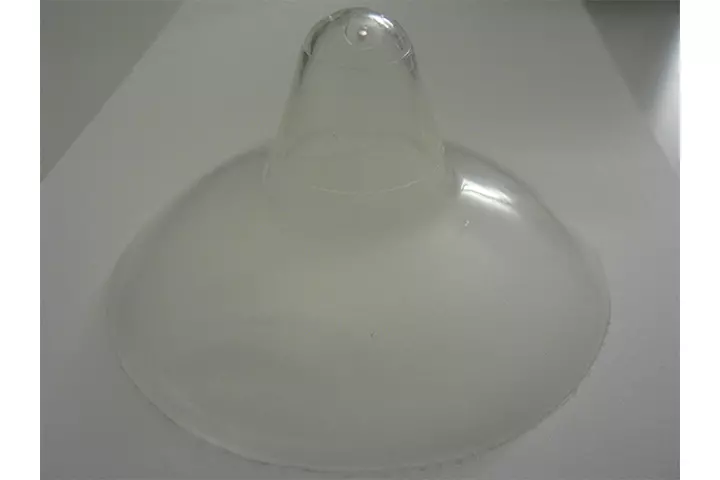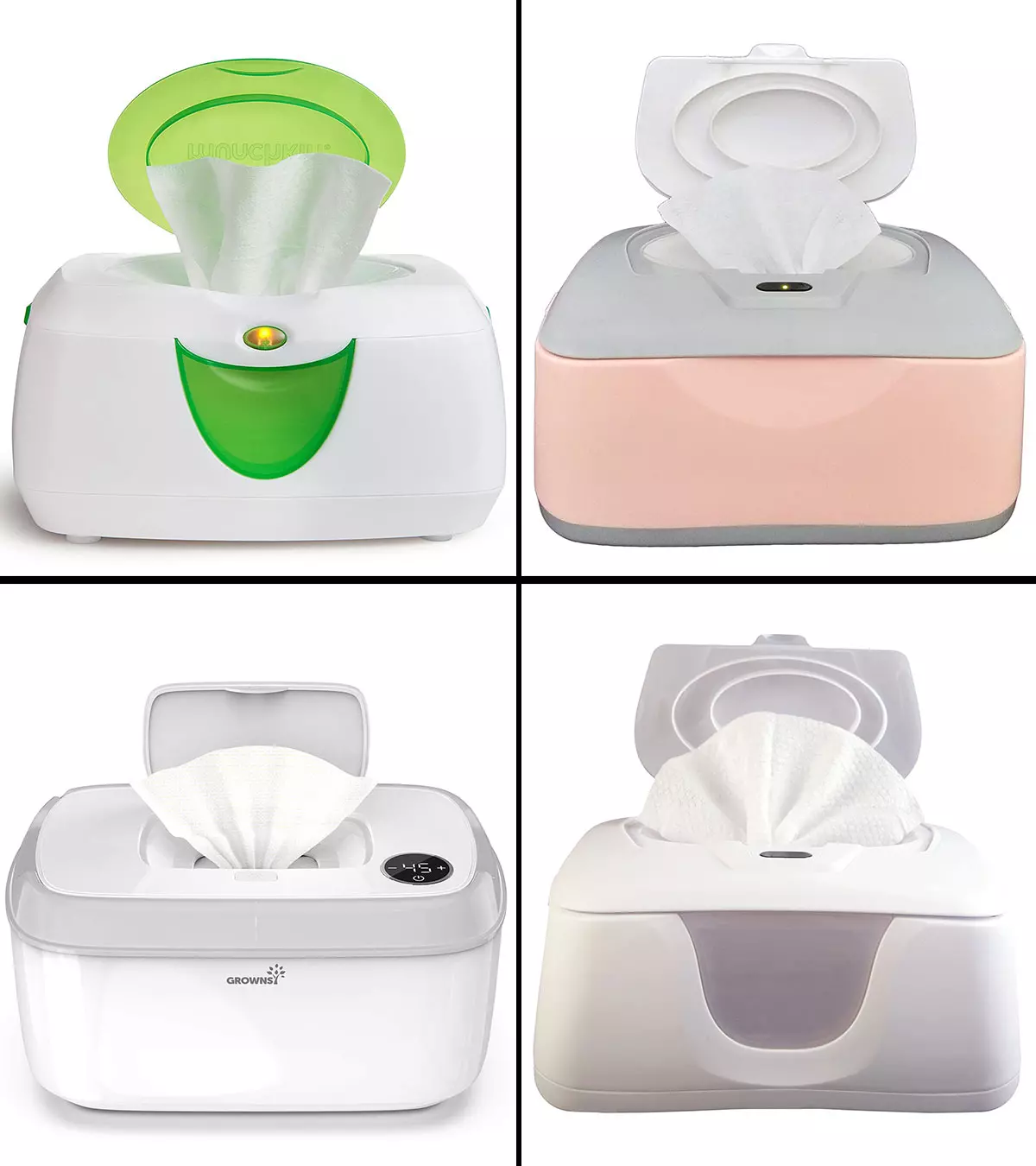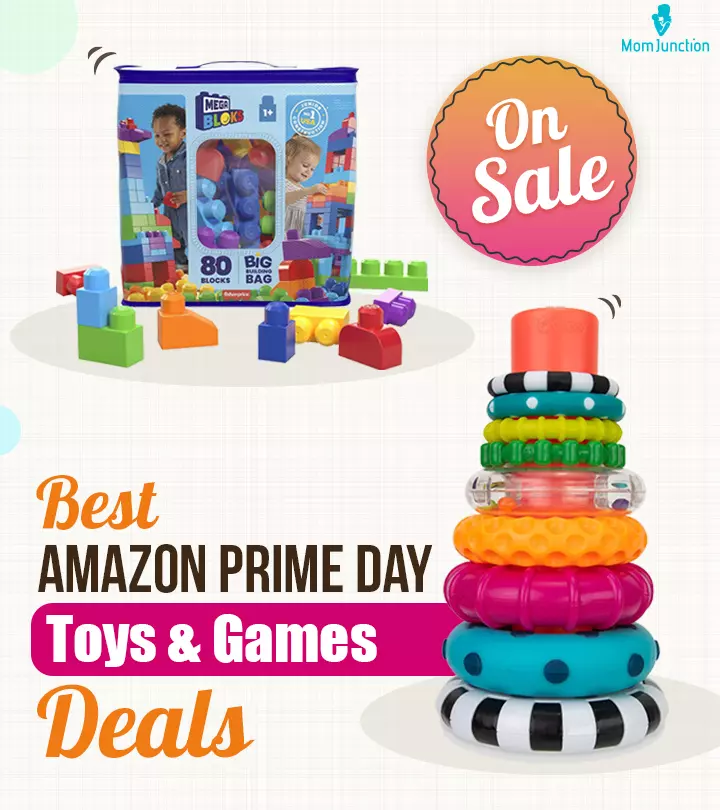

Image: Shutterstock
Breastfeeding can be a difficult task for some women, especially in the early days after the baby’s birth. A nipple shield can help your baby latch onto your breasts and suckle more effectively. They are helpful if you have inverted nipples, your baby is premature, or your baby has tongue issues. A nipple shield helps with pain and soreness during breastfeeding. They are typically made of silicone and are flexible and soft, with a small hole in the tip that allows your baby to access milk. Nipple shield is a temporary solution, and you can stop using them when the breastfeeding issues resolve. In this post, we discuss what a nipple shield is, how to use it, and things to keep in mind before going for one.

What Is A Nipple Shield?
In the simplest of terms, a nipple shield is an artificial nipple sheath worn over the nipples during breastfeeding. This sheath is mostly made of silicon but comes in rubber and latex materials as well. A few places across the world also sell glass or wax nipple shields.
The nipple shield covers the areola of the breast during breastfeeding and has holes at the end, towards the nipples. These holes facilitate the flow of milk and help the baby feed easily.
Some nipple shields have areas around the brim which allow direct contact of the baby’s chin or nose to the mother’s skin. This aids in skin-to-skin contact.
This begs the question, why should a mother (such as you) use a nipple shield breastfeeding?
Why Do You Need A Nipple Shield?
Nipple shields protect the areola and also facilitate breastfeeding. Besides these primary functions, they could be most handy for reasons mentioned below. But some lactation experts recommend nipple shields as a last-resort fix.
- Latching on problems: If your baby is unable to latch on well to the breast, then a nipple shield can be used. The shields make the nipples point outwards, thereby making it easy for the milk to flow into the baby’s mouth.
- If the baby is too small or premature: Babies who are small or premature find it difficult to suck milk. This is also true in the case the baby is unwell. After a couple of weeks, they can latch on better. Use a nipple shield for the first few weeks if your baby is too small or premature. This would also aid his growth process.
Am I suggesting that you use nipple shield as long as you breastfeed your child? No. Most doctors do not recommend the use of a nipple shield for long,
- Sore breasts: Sore or cracked nipples make it difficult for the mother to feed her baby. As the nipples ache when the baby suckles the milk out, the mother can use a nipple shield to prevent the pain. Nipple shields make it easy for the baby to suck at the artificial nipple while the areola and the nipple are well protected.
Nipple shields should be used after three to six days of the baby’s birth. The simple reason is that the delayed use prevents the engorgement of breasts (1). Just after the baby is born, the mother’s breasts are ready to give out milk. The baby may not immediately learn to suckle with the shield on, resulting in engorgement.
How To Use A Nipple Shield?
Have a face-to-face demonstration with a specialist or a breastfeeding counselor to understand the process of using a nipple shield. There are a few things you must do before you use the nipple shield.
- Sterilize and wash the shield thoroughly before putting it on the nipples during breastfeeding.
- Rinse the shield gently with warm, soapy water. This will soften the nipple shield and make it easier to put on the nipples.
- You should ideally wash the nipple shield after every feed.
- Use the shield only after it is dry.
As nipple shields for breastfeeding come in various sizes, shapes, and makes, choosing the right one is critical.
How Would You Know If The Nipple Shield Fits You Well?
Not everything fits well. A correct nipple shield will not hurt your nipples or cause crack and pain in the region.
- There should be a small space between the crown of the nipple shield and the woman’s nipple. If this is absent, then the nipple shield is too small. In such cases, your nipples will be bruised and hurt. At the same time, do not buy big shields as they create a larger space in between, making it difficult for your baby to draw out milk.
- Another way to know if your nipple shield fits you well is to check how your nipples feel post-feeding. If they are cracked or feel sore, then you must change the size of the nipple shield.
- Nipple shields come in three sizes – 16mm (small), 20 mm (medium), 24mm (large). You should choose one based on the size of your nipple. Check the diameter of the base of the nipple after a breastfeed.
Here’s How To Put On A Nipple Shield For Breastfeeding
Putting on a nipple shield is easy if you have the correct size. Here’s how you do it.
Before:
- Turn the inside out of the nipple shield half way through the shank and then place it on the nipple.
- After adjusting the shield on the nipples, place the back of the shield on the areola with the tip drawn out. At this point make sure that your nipple is inside the nipple of the shield. The placement should be such that the nipple of your breasts should be inside the tip of the nipple shield.
- Moisten it with breast milk to seal the shield in place.
- Hand-expressing a little amount of breast milk into the shield tip will help your baby get started.
After:
Make sure that your baby is latching on well and sucking the milk. Get your breast closer to his mouth and nose and see to it that the baby is sucking enough milk. These steps will help you:
- Squeeze out some breast milk or express it onto the nipple shield.
- Hold your breast with one hand and the baby’s neck and head with the other. Bring the baby’s mouth and nose closer to the breast and help him latch on to the nipple shield.
- Once the baby senses the breast, make sure that he opens his mouth wide. If his mouth is not open wide, he may not be taking enough milk but consuming only air instead.
- Then gently touch the crown of the nipple shield to his mouth roof. This will help him take milk easily and pause for breathing if he wants to.
- If your nipple shield has sections from where the baby can make skin to skin contact, then make sure the baby’s face is touching them. But be careful about not interrupting his feeding session.
- To know if the baby is feeding well, you could see a breastfeeding consultant. She would give you feedback on whether or not the feed was proper and if there are any areas you can improve upon.
Observations To Be Made When Using A Nipple Shield
While the idea is that your nipples should not hurt when you are feeding the baby, you should also make sure that your baby is getting enough milk. We did suggest that you see a breastfeeding consultant, but you could check the milk flow at home as well.
- A correct latch is important. The baby jaws should remain close to the breast but not out on the shaft of the nipple shield.
- You must see to it that your baby has at least five to six wet diapers a day. This would mean that he is feeding well.
- Your baby must have regular stools, which means that he should stool at least thrice every day if he is about four to six weeks old. The frequency of stools goes down as he grows, but he should continue to have diarrhea.
- One more thing that you could check to make sure that your baby is able to feed well is by checking his weight. A frequent weight check would take away any feeding fears.
But most importantly, you must check with your breastfeeding consultant at least once in order to get a better insight into the use of nipple shield during breastfeeding.
Advantages Of A Nipple Shield
Why use a nipple shield when you can use your body? Yes, most medical professionals would ask you to avoid nipple shields. They are useful if you have sore or cracked nipples.
The continued use, which should be as brief as can be, is necessary only until your baby learns to latch on well.
Breastfeeding a baby better is another advantage of a nipple shield.
Disadvantages Of A Nipple Shield
There is no alternative to natural things, and nipple shields can go a tad bit awry. Here are the disadvantages of using nipple shields:
- The mother’s ducts may be plugged if the milk flow is unlike the way it should be.
- If the nipple shield is not of the right size, it can cause pain and problems for the mother.
- In case the milk supply is less, the baby would go hungry.
- The mother could have mastitis (2).
- Your baby may have problems when he is weaning from a nipple shield.
Weaning A Baby From A Nipple Shield
Once you think you are ready to make your baby switch to full-time breastfeeding without the use of external equipment, then you may want to talk to a breastfeeding counselor. She will aid you in weaning the baby. There are a couple of things you could do to make sure that your baby switches to the breast, just as easily:
- When you want to wean your baby from the nipple shield, you should not do it suddenly. It should be a gradual process.
- The best way to do this would be to switch the baby when he is a little tummy full. Switching the baby over from a nipple shield when he is hungry would make him cranky. He may not want to have milk at all, and this would leave him hungry.
- Switch him over from a nipple shield when you’re switching breasts. This would make sure that the baby continues to suckle, as he is still feeding.
- Once he gets comfortable alternating between your nipple on one breast and the shield on the other, begin removing the shield mid-feeding. A word of caution here, do not be sudden. Attempt this when the baby stops to breathe.
- Try different positions for feeding your baby, such as sitting, standing, lying down, or any other comfortable position.
- Hold your baby in such a way that his entire body faces yours, and he is comfortable in his position. The idea is that the baby should not have to turn his head when he is trying to suckle.
- Pump out some milk or just press your breasts. This would make sure that milk comes out easily and with little effort when the baby begins to suck. This would also make the nipple long, and he can drink easily.
- The baby’s mouth should be wide open (as though he is yawning). To facilitate this, you could gently put your tiny finger is his mouth or close to his lips and slightly tickle him. This would help him open his mouth.
- The pinky finger also works in facilitating the baby’s mouth movements. As he sucks on the finger, he touches his tongue to the roof of his mouth. This is exactly the way he needs to drink breast milk.
- You could apply a little ice on your nipples to make them hard. But do not feed your baby immediately. Wait for a few minutes.
- Do not time the breastfeeding sessions. You should feed your baby as and when you think he is hungry. Do not try to follow a pattern or schedule. As your baby is only on breast milk, he may feel hungry quickly.
Do remember that the baby would not immediately wean away from a nipple shield. It would take time, and you would have to be patient in achieving this.
5 Things To Know About Nipple Shield
1. The best nipple shield for breastfeeding:
Thin, clear silicon type of nipple shield is the best to use. You can clean them easily and they last longer.
Some varieties come with a cut-out that allows for more skin-to-skin contact than the typical shield. If you’re using a rubber shield, consider getting a silicone one instead.
Never use a baby bottle nipple on the breast.
Medela Nipple Shield is one of the most reliable nipple shields, and it comes in cutaway shapes.
2. Nipple shield does not hinder milk supply:
A nipple shield never hinders the flow of milk. If the nipple shield is well placed, the baby will be able to suckle well.
3. Nipple shields should not be cut after use:
The ends of the nipples in the shield are sometimes cut off after a few uses. But you can cut only plastic, latex, or rubber nipple shields. Never cut a silicon nipple shield as the ends become rugged and uneven, causing injury to the baby’s mouth and your breasts.
4. I know my baby is not taking in air when:
Your baby will try to suckle with his tongue touching the roof of his mouth. This would make sure that the baby can stop the milk flow when he feels full.
He should make soft gulping sounds, and you should be able to see his lower jaw moves. This would ensure that he is not taking in air.
5. I pump my breasts after feeding baby from nipple shields:
This would be important if your baby is very small and is not having adequate milk. In such cases, you must empty your breasts (using good quality breast pumps). Leaving breasts full could lead to engorged breasts. If your baby is feeding well, then there would be no need to empty your breasts.
Breastfeeding is essential for you and your baby’s well-being. Therefore, you should ensure that it is not hindered in any way. If you experience latching problems, sore breasts, or inverted nipples, a nipple shield can help you solve them. However, when using a nipple shield, ensure it is cleaned properly and dried. Also, it should fit well so that your baby gets adequate milk. It is important to wean your baby off a nipple shield after your issues are resolved because it may sometimes result in plugged milk ducts and mastitis.
Community Experiences
Join the conversation and become a part of our nurturing community! Share your stories, experiences, and insights to connect with fellow parents.
Read full bio of Melissa Kotlen
Read full bio of Kalpana M















